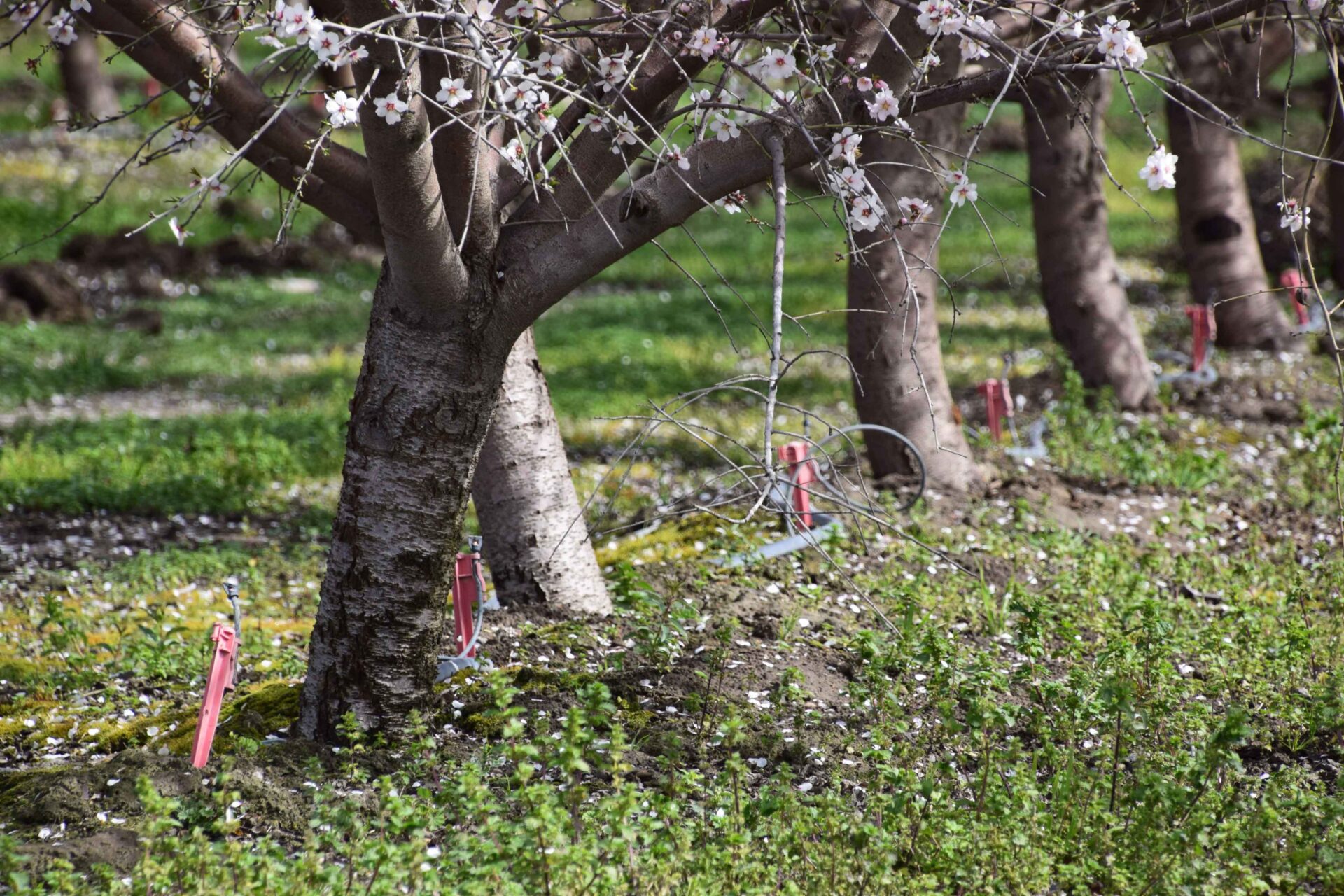With California’s drought in mind, more researchers are delving into plant water use, specifically, plant responses to limited water during the growing season.
University of California plant scientist Ken Shackel, a speaker at the 2016 South Valley Nut Conference, has been working on a project that addresses the opposite situation: how a plant responds to too much water. Shackel’s research project in the northern San Joaquin Valley is looking less at plant water use and more on how almond trees react over time to wintertime flooding of an orchard. The findings from this multiple year study could pave the way for use of almond orchards in groundwater recharge programs.
The opportunity to bank groundwater and recharge declining groundwater levels carries issues with tree and root health as well as economic, environmental and political issues.
Those all have to be addressed before moving forward the program, Shackel said.
Raising groundwater levels by allowing winter flood water releases to percolate into the ground is not a new idea, but using suitable orchards for recharge purposes may be a new opportunity to use flood releases in the Modesto- Turlock area. There is an opportunity to replenish groundwater supplies by recharging, Shackel affirmed, “but a lot of ducks need to be in a row.”
According to the organization Sustainable Conservation, California’s groundwater storage capacity is more than ten times that of surface storage. In normal rainfall years, about 30 percent of the state’s water supply is pumped from the ground. That percentage rises to 60 during drought conditions. Increased groundwater pumping to compensate for lack of surface water deliveries has led to the decline of groundwater levels in many areas of the state, causing economic impacts as well as impacts on nearby waterways, wildlife, plants and trees. Shackle said studies have shown that groundwater levels can recover with active groundwater management practices.
Understanding how and where groundwater recharge will affect groundwater levels is complicated, Shackel said.
“There are no underground caverns of water, it is more likely to be a soil and water mix. There can be salty contaminants as you go deeper, sandy streaks and benches. The water pumped at one site may have come from recharge miles away,” he said.
Knowing where recharge will be effective and where it will not is important. The Soil Agricultural Groundwater Banking Index uses soil characteristics to determine suitability for groundwater recharge. The index takes into account hydraulic conductivity, occurrence of water restrictive layers, topographical limitations (slope) Chemical limitations (EC) and surface conditions (erode ability).
There is a list of questions that must be answered about groundwater recharge in almond orchards. Shackel’s research is looking at timing of flooding orchards (dormancy) what soil conditions are best, root and tree health over time and effects on environment and water quality. His study, begun in 2015, was done at sites near Delhi and west of Modesto. Both orchards had flood irrigation capability. The Delhi site, ranked excellent for recharge suitability by the SAGBI has soil described as ‘dune.’ Pre treatment crop yields were noted and monitoring equipment was installed in 2015. Last winter, 24 inches of water was applied at the orchard at 4-6 inch increments. Shackel said soil moisture increased rapidly after application, but was followed by a rapid drop in about 12 hours as the water percolated downward. At the Modesto site, with fine, sandy loam, soil moisture increase was more modest, 24 inches of water was applied. There, it took two full days for water to drain from saturated.
To monitor root growth and health, Shackel used a mini rhizotron” a device inserted into the ground next to the roots to photograph root growth over time. The observations, made from January to June to keep track of root health and to see if the white roots change over time. At the Modesto site, root growth was observed by March and brown roots were observed by June. In the sandier soils of Delhi, Shackel said no root growth was observed until later in the growing season.
He also kept track of tree health with a pressure chamber, testing leaves to determine water stress caused by root damage. At the Modesto site, there was no evidence of tree stress. The Delhi site’s trees were found to be in a better state of hydration throughout the growing season following the flood applications.
“That was the opposite of what we thought would happen,” Shackel said.
No negative effects were observed in trees at both sites and crop yields were comparable to the previous year.
“We may need a lot of years to make sure the trees are not negatively affected,” he said.
He plans to continue tracking yields and tree health at the sites.
Shackel added that there were no obvious problems with soil salinity or nitrates.
The water used in the trials was city runoff.
Tracking where the recharge water goes is another part of the study that is being undertaken by Stanford and UC Berkeley engineers.

Cecilia Parsons
Cecilia Parsons has lived in the Central Valley community of Ducor since 1976, covering agriculture for numerous agricultural publications over the years. She has found and nurtured many wonderful and helpful contacts in the ag community, including the UCCE advisors, allowing for news coverage that focuses on the basics of food production.
She is always on the search for new ag topics that can help growers and processors in the San Joaquin Valley improve their bottom line.
In her free time, Cecilia rides her horse, Holly in ranch versatility shows and raises registered Shetland sheep which she exhibits at county and state fairs during the summer.
















